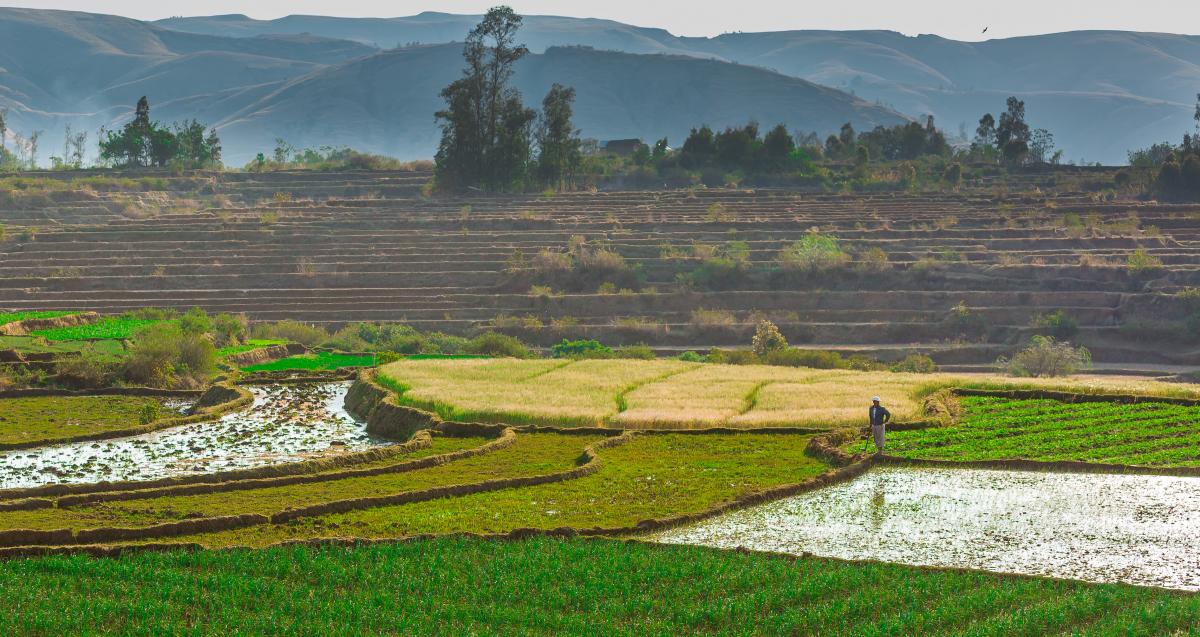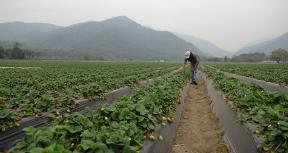Irrigation Scheme Types and the World Bank’s Portfolio
Irrigation Scheme Types
| Type | Description | Key Management Challenges |
| Type 1. Large-scale public schemes | Government-sponsored irrigation organizations responsible for water distribution systems and provision of a water delivery service to farmers or groups of farmers and irrigators. Usually over 1,000 hectares. | Economic and financial viability and technical and managerial upgrading is needed to allow schemes to respond to the new needs of farmers. |
| Type 2. Small- and medium-scale community schemes | Built, owned, and maintained by farmers and their local communities. Public sector involvement is limited, focusing on improvement, rehabilitation, or consolidation | Schemes are rooted in communal knowledge and tradition that may not be equipped to deal with water variability through climate change. |
| Type 3. Individually managed schemes | Self-provision by individual farmers through groundwater from borewells on their property or a surface water source. Developed around cities to take advantage of local markets for high-value crops. Farms are 0.5 to 2 hectares typically. | Reliance on groundwater or wastewater makes schemes vulnerable to environmental and health-related problems, for both consumers and on-field workers. |
| Type 4. Corporate irrigation farms for cash crops | Owned and operated by a single entity or company. Various partnership arrangements are possible between corporate agribusiness and community-farmed dimensions. | Such arrangements require support to develop fair and transparent contracts and a regulator to ensure a balance of power between the private sector partners and community groups. |
Source: Adapted from World Bank 2018a.
Over the evaluation period, World Bank’s irrigation and drainage portfolio is dominated by type 1 (large public) schemes covering 64 percent of the total number of projects in the portfolio, followed by type 2 (small and medium community-based) schemes with 20 percent and type 3 (individually managed) schemes with 16 percent. Type 4 (corporate irrigation farms) schemes only account for 1 percent of the portfolio. This pattern holds broadly for both closed projects and projects currently active in the evaluation portfolio.
Types 1 and 2 irrigation schemes are likely to remain a substantial proportion of the World Bank’s portfolio in the foreseeable future. Type 1 schemes were designed to meet the demands for irrigation between the 1960s and 1980s. Overall, these large infrastructure schemes need rehabilitation and modernization to enable better water service delivery, integration with systems to support higher-value agriculture, and to make them more climate- resilient.
Types 3 and 4 schemes will be an increasing share of the World Bank’s future portfolio. Type 3 schemes are the fastest-growing segment in sub-Saharan Africa. If left unregulated, this area is likely to experience similar groundwater over extraction issues as South and East Asian countries have faced in the past two to three decades. Type 4 schemes are also likely to grow in importance as a response to growing urban migration, lower availability of farm labor, and growing demand for high-value and exportable produce, which require sophisticated production and marketing practices.
More in Chapter 2: Irrigation Service Delivery: The Evolving Context and the World Bank's Response
Recommendation
This evaluation proposes an expanded results framework for the irrigation sector that could help guide the transition from a predominantly infrastructure‐oriented design focus to a multisectoral effort to achieve sustainable and outcome‐oriented irrigation service delivery and impacts.
The proposed expanded results framework emphasizes the various dimensions of water service delivery, integrated water resources management (IWRM), water accounting, marketing linkages, accountability, and increasing climate resilience.
The expanded results framework also places a premium on measuring outcomes from planning and implementing WRM by adopting appropriate institutional arrangements and widely available instruments. This is increasingly feasible owing to advances in information and communication technology and more affordable means of acquiring and sharing digital information, (for example, from sensors and water flow measurement devices, satellite data, and drones linked to cell phones and the internet of things).
View the expanded results framework
Read Chapter 6: Implications for Future World Bank Support to Irrigation





